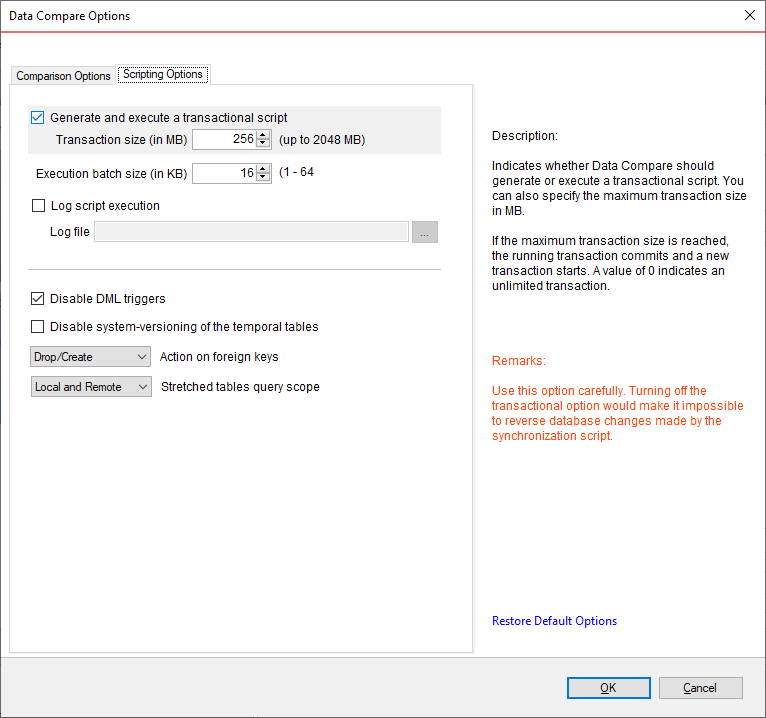Scripting Options are listed on the second tab of the IDERA SQL Data Compare Options window. Those options affect the way the synchronization script is generated but do not affect the comparison operation.
Transaction size. Determines the max. size of the SQL Server transaction, under which the synchronization script runs. In some cases, the synchronization script can get extremely large, with millions of insert/update/delete statements. Wrapping such a large script in a single transaction may not be possible, due to the transaction size limitations, or acceptable, for performance and other reasons. Setting a max. transaction size is a way around these restrictions. If the transaction has a max. size, data compare commits the current transaction when the max. size is reached and starts a new one.
To have a transaction with no upper limit, set the max transaction size to 0.Please use this option with caution. If you set a max. transaction limit and the synchronization process is canceled, only the current, open transaction is rolled back. Changes committed prior to that transaction are permanent and cannot be reversed. We strongly recommend, if possible, to leave the transaction unlimited, since it ensures that all changes in the database are either committed or rolled back.
- Batch size. Determines the size of data that is transmitted to SQL Server in one execution. A transaction normally contains many batches, but the batch itself is a single unit of work that cannot be divided any further.
IDERA | Products | Purchase | Support | Community | Resources | About Us | Legal
